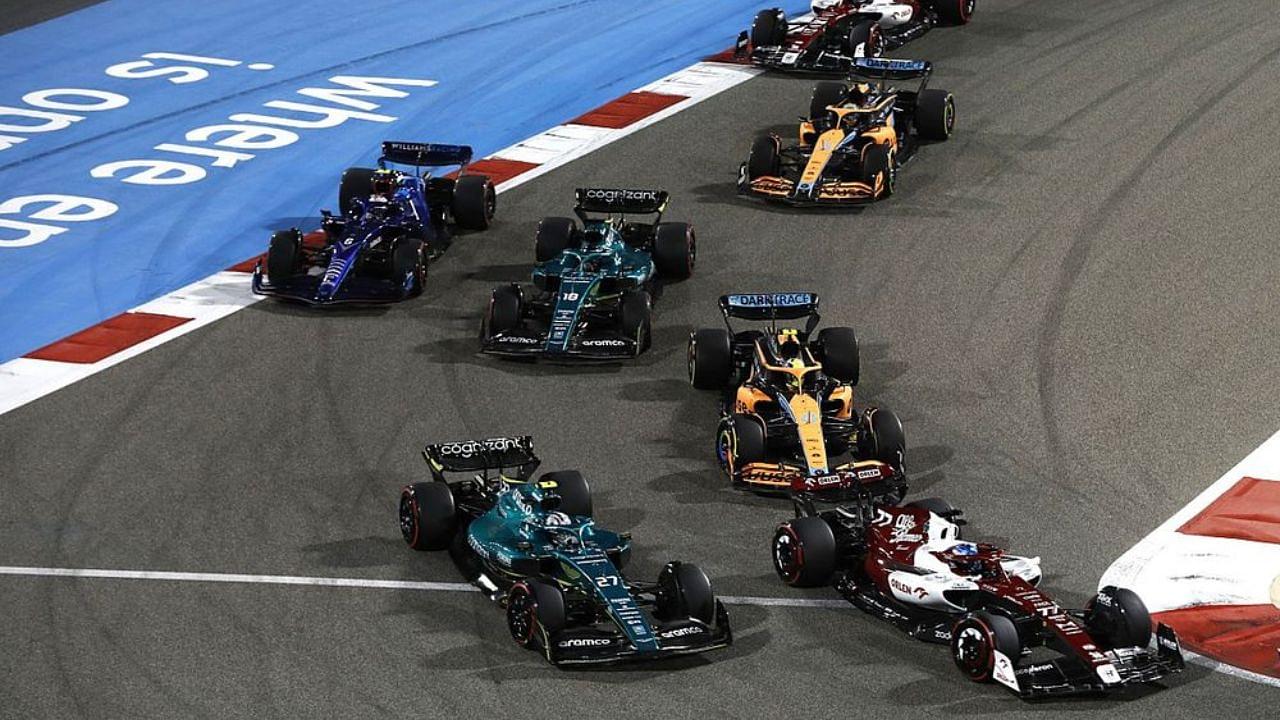Formula 1 drivers have to maintain a proper diet so as to maintain their weight according to the car. The height and weight of a driver play a huge role in the car and its aerodynamics.
Since there are 20 drivers on a grid, there is a huge range of height across the paddock. This is because Formula 1 now is much more flexible on the height and weight of the driver than it was in contemporary times.
The sport is all about squeezing through the corners and taking the best out of the car to maximise its performance on the track.
So as much time and millions the teams spend on scrapping the unnecessary weight off the car, they also want drivers to maintain weight according to their height while also ensuring that they stay strong enough to drive.
#F1 drivers’ height pic.twitter.com/bqwoIBTfm4
— KDannington (@KDannington) April 20, 2022
Also Read: How Much Did the FIA Earn From F1 Drivers and Teams for the 2022 Season?
What is the height and weight of 2023 F1 drivers?
A lot of shuffling took place in the drivers’ market in the 2022 season. There are three rookie drivers who have joined the grid and one who is making a return to the sport.
These new additions are – Oscar Piastri(McLaren), Logan Sargeant(Williams), and Nyck De Vries(AlphaTauri) and the one who is making a return is – Nico Hulkenberg(Haas).
2023 F1 DRIVERS’ HEIGHT AND WEIGHT
| Drivers | Height (metres/ft &in) | Weight (kgs) |
| Lewis Hamilton | 1.74 m (5’8.5) | 73kg |
| George Russell | 1.85m (6′ 0″) | 70kg |
| Max Verstappen | 1.81m (5′ 11″) | 72kg |
| Sergio Perez | 1.73m (5′ 8″) | 63kg |
| Charles Leclerc | 1.80m (5′ 10″) | 69kg |
| Carlos Sainz | 1.78m (5′ 10″) | 64kg |
| Lando Norris | 1.70m (5′ 6″) | 68kg |
| Oscar Piastri | 1.78m (5′ 8″) | 68kg |
| Esteban Ocon | 1.86m (6′ 1″) | 66kg |
| Pierre Gasly | 1.77m (5′ 8″) | 70kg |
| Fernando Alonso | 1.71m (5′ 6″) | 68kg |
| Lance Stroll | 1.82m (5′ 8″) | 70kg |
| Valtteri Bottas | 1.73m (5′ 6″) | 69kg |
| Guanyu Zhou | 1.75m (5′ 7″) | 63kg |
| Nyck de Vries | 1.70m (5′ 6″) | 67kg |
| Yuki Tsunoda | 1.59m (5′ 2″) | 54kg |
| Logan Sargeant | 1.81m (5′ 9″) | 71kg |
| Alex Albon | 1.86m (6′ 1″) | 74kg |
| Nico Hulkenberg | 1.85m (6′ 0″) | 78kg |
| Kevin Magnussen | 1.74m (5′ 7″) | 68kg |
Also Read: How Popular Is Netflix’s Drive to Survive?
Why are height and weight crucial for F1 drivers?
The height and weight of a driver affect how a car performs. Even a minor difference in height and weight of an F1 driver can have an impact on how fast an F1 car goes.
In 2022, the minimum weight of the car had gone up to 795 kgs and out of this at least 80 kgs need to be made out of the driver.
The concept of ‘taller the driver, more the weight’ is clear but the drivers have to ensure that they maintain that minimum weight throughout the season through their diet and exercises so as to not have a drastic impact on the performance of the case.
Similarly for shorter drivers, if they are below the threshold of 80kgs, ballast is added in the cockpit area so as to reach the minimum weight. The ballast is always positioned in the cockpit area to improve the balance of the car.
Also Read: Does Mercedes Team Principal Toto Wolff Own Silver Arrows?




